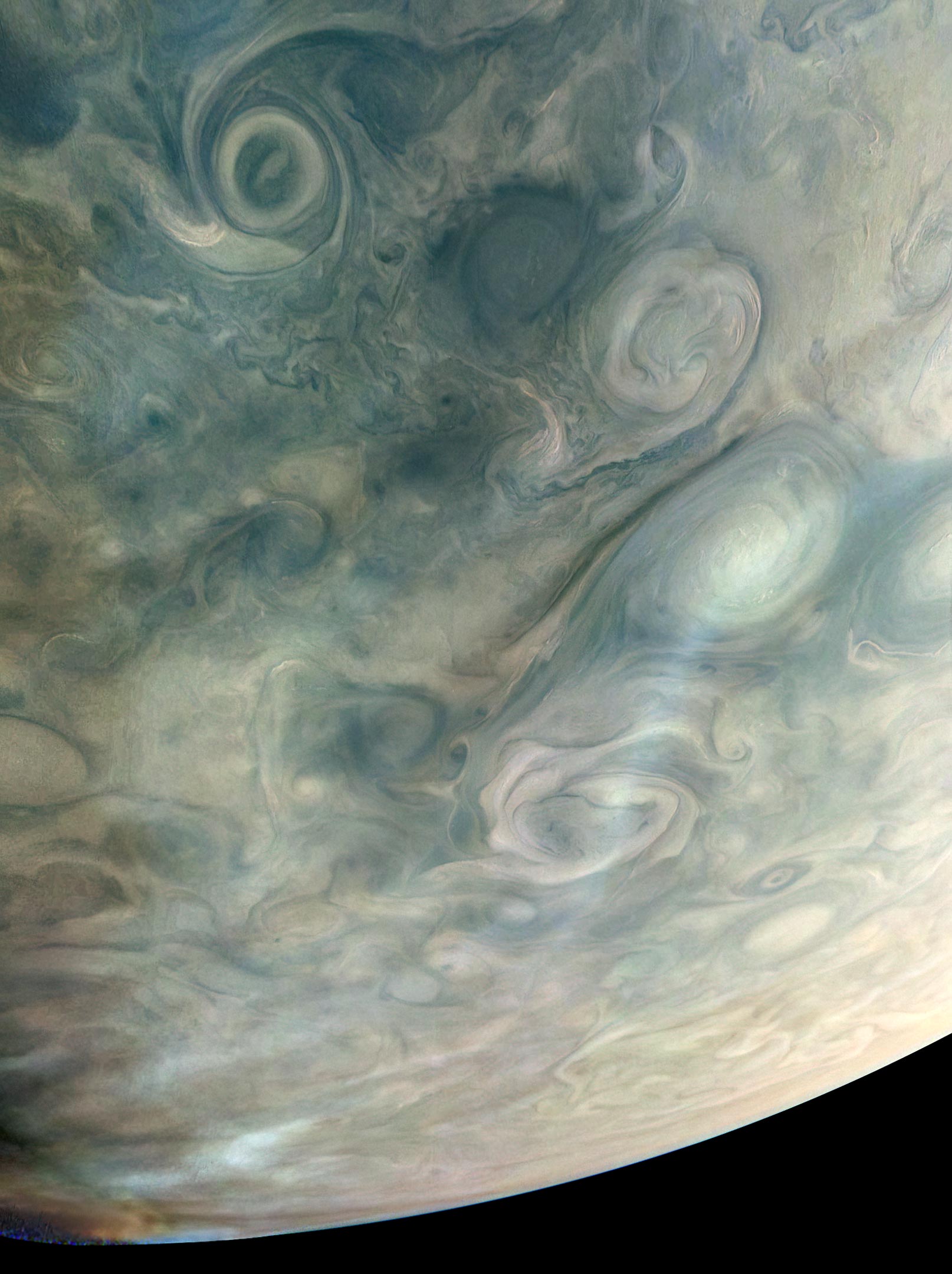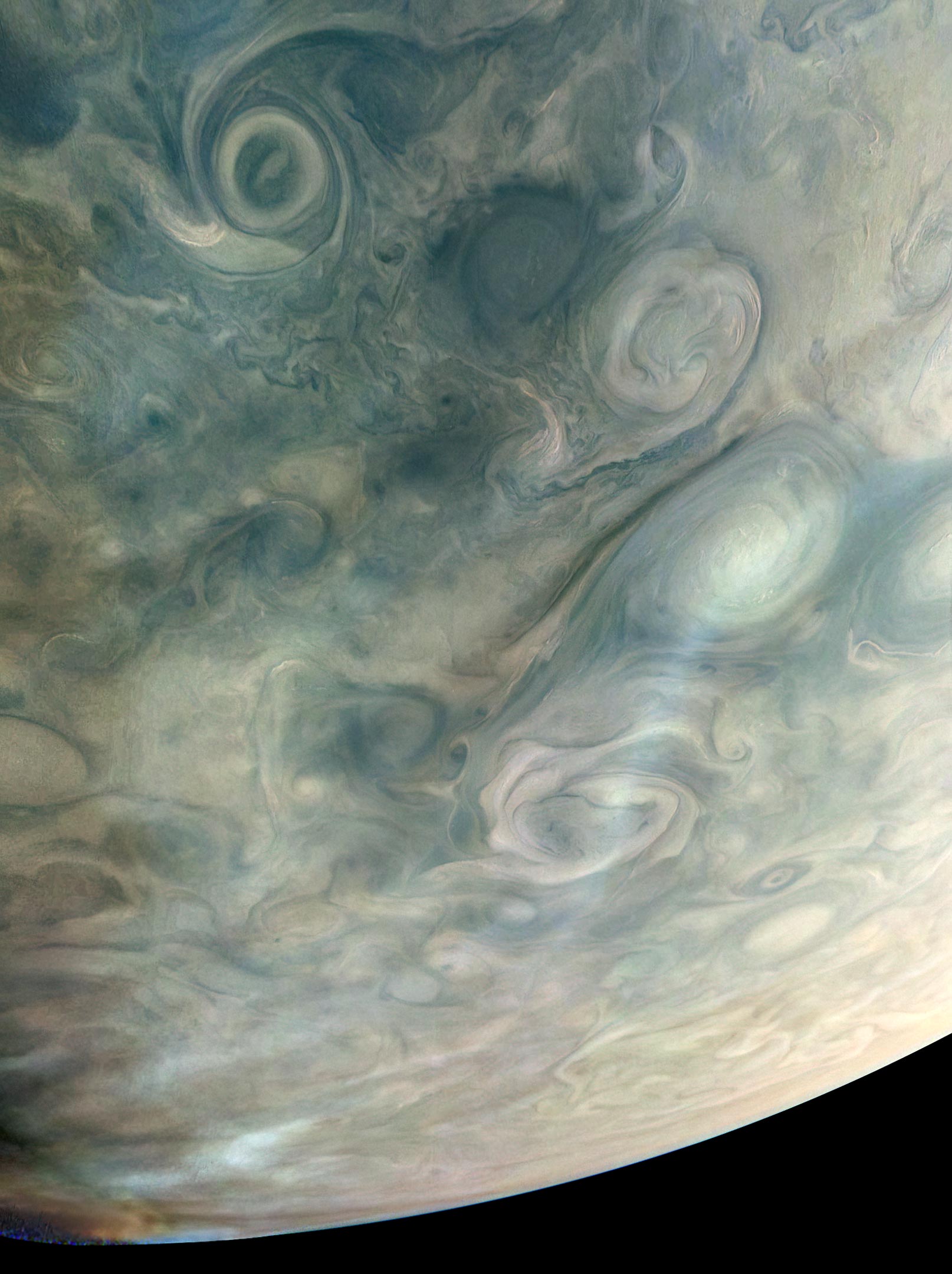
NASA의 주노 임무는 2023년 3월 1일 목성 49호의 근접 비행을 완료하는 이정표를 달성했습니다. 비행 동안 우주선은 제트 N7이라고 하는 지역에서 허리케인 위에 형성되는 높은 고도 안개 띠의 놀라운 이미지를 포착했습니다. 출처: NASA/JPL-Caltech/SwRI/MSSS, Björn Jónsson의 이미지 처리 © CC NC SA
2023년 3월 1일,[{” attribute=””>NASA’s Juno mission completed its 49th close flyby of Jupiter. As the spacecraft flew low over the giant planet’s cloud tops, its JunoCam instrument captured this look at bands of high-altitude haze forming above cyclones in an area known at Jet N7.
Citizen scientist Björn Jónsson processed a raw image from the JunoCam instrument, enhancing the contrast and sharpness. At the time the image was taken, Juno was about 5,095 miles (8,200 kilometers) above Jupiter’s cloud tops, at a latitude of about 66 degrees.

This photo of Jupiter, taken from the Hubble Space Telescope on June 27, 2019, features the Great Red Spot, a storm the size of Earth that has been raging for hundreds of years. Credit: NASA, ESA, A. Simon (Goddard Space Flight Center), and M.H. Wong (University of California, Berkeley)
Jupiter is the largest planet in our solar system, renowned for its massive size and distinctive bands of swirling, colorful clouds. This gas giant is best recognized for its Great Red Spot, a storm that’s larger than Earth and has been raging for hundreds of years. Jupiter possesses an impressive magnetosphere, creating intense radiation zones and a dramatic influence on its environment.
The planet is surrounded by at least 95 moons, the four largest being Io, Europa, Ganymede, and Callisto—also known as the Galilean moons, named after the astronomer Galileo Galilei who discovered them. These moons each have unique characteristics, from volcanic activity to possible subsurface oceans.

An artist’s concept of the Juno spacecraft in orbit around Jupiter. Credit: NASA
The Juno mission, launched by NASA on August 5, 2011, aims to understand the origin and evolution of Jupiter. This solar-powered spacecraft arrived at Jupiter in July 2016, and its primary mission is to peek beneath Jupiter’s dense cloud cover to study the planet’s atmosphere and magnetosphere. Juno accomplishes this by using a suite of scientific instruments, including the JunoCam, a camera specifically designed to capture high-resolution images of Jupiter’s poles.
The Juno mission also aims to determine whether Jupiter has a solid core, map its magnetic field, measure water and ammonia in the deep atmosphere, and observe the planet’s auroras. Through its extensive flybys, the Juno spacecraft is providing unprecedented insights into Jupiter’s structure, atmosphere, and the fundamental processes that drive its complex system.

“음악 팬. 매우 겸손한 탐험가. 분석가. 여행 괴짜. 익스트림 TV 전문가. 게이머.”










More Stories
거대한 블랙홀에서 한 쌍의 거대한 플라즈마 제트가 발사되는 것이 목격되었습니다. 블랙홀
SpaceX는 희귀하고 위험한 착륙으로 Falcon 9 로켓을 벼랑 끝으로 밀어 넣습니다.
하베스트 문(Harvest Moon)과 슈퍼문(Super Moon)이 부분 월식을 가져온다: 언제, 어떻게 시청해야 하는가 | 우주 뉴스